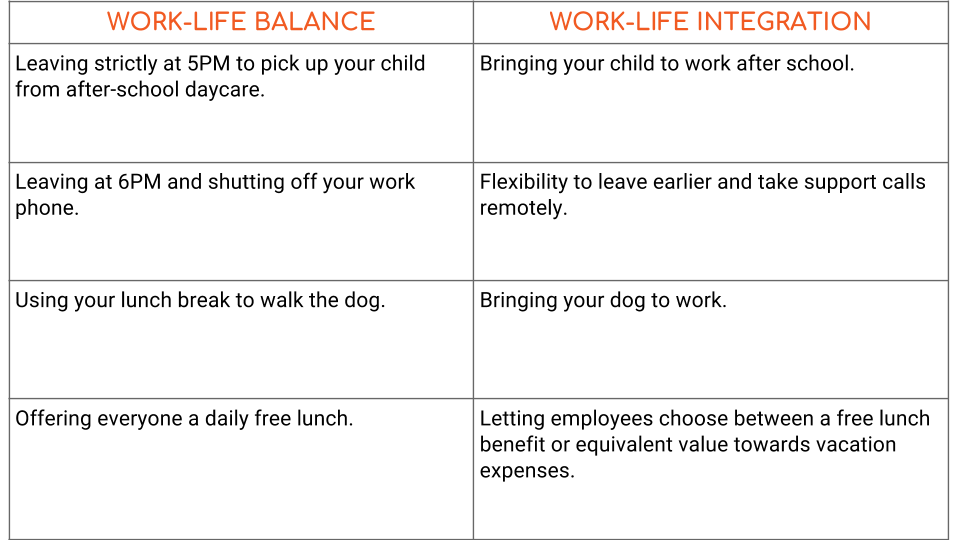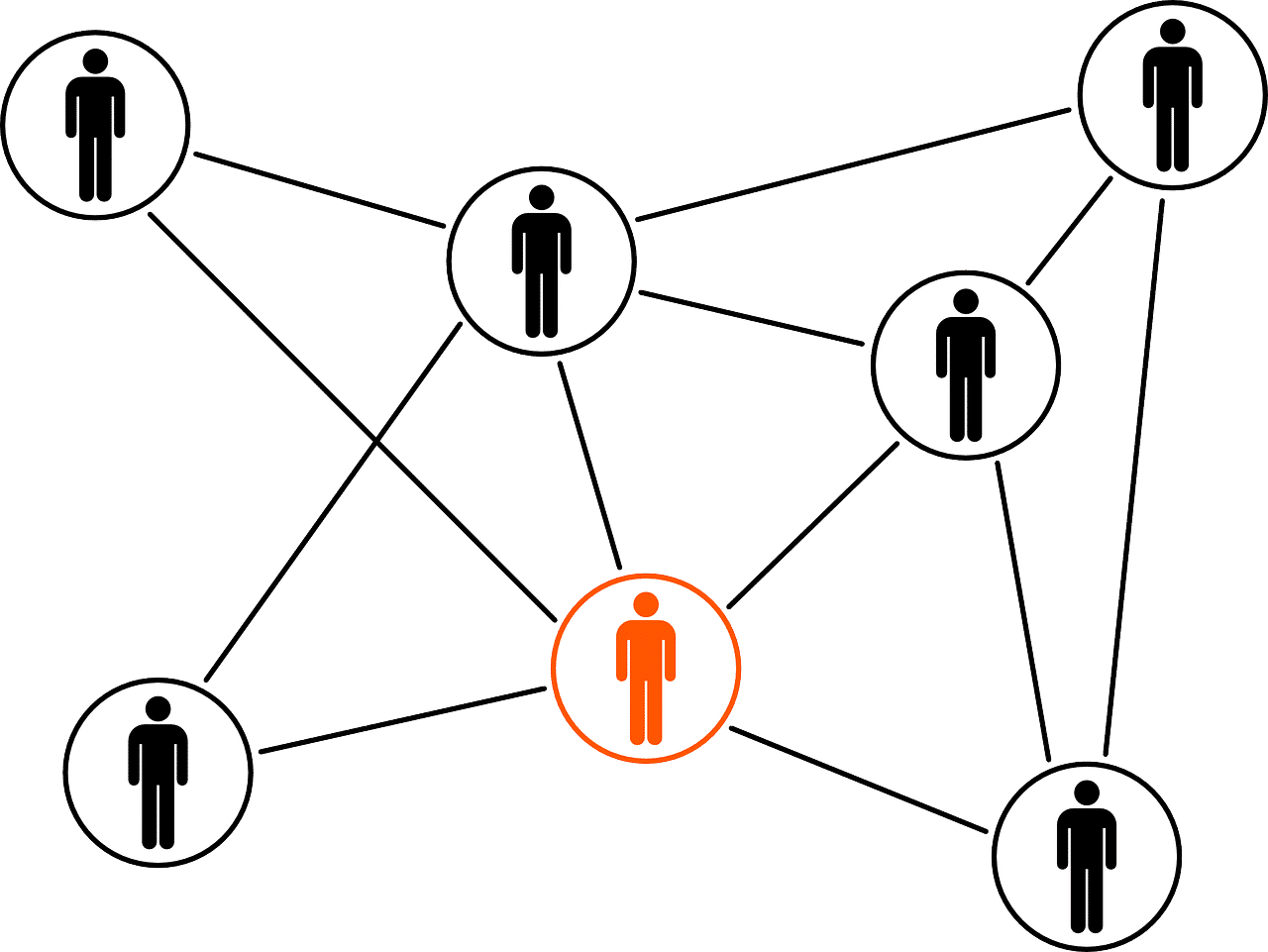Organizations need to stop focusing on wasteful work-life balance programs. Work-life integration programs cost less and achieve greater ROI. Here’s how.
You’ve failed to achieve any result in your work-life balance programs as a business. As a result, employee engagement and satisfaction are down. You’re at a loss as to how to achieve that mythical unicorn of balance as an employee while convincing yourself it must be possible.
So what do I tell employees and businesses to do? Stop wasting money on work-life balance programs instead, focus on the integration of the two.
What happens next? I get the look of extreme, uncomfortable confusion. I’ve seen it hundreds of times.

I’ll discuss the problems with work-life balance programs and explain work-life integration as well as creative ideas to start programs.
First, let’s start with the problem of balancing life and work.
You’re lost as to how to achieve that mythical unicorn of work-life balance.
Work-Life Balance is Too Subjective
Balance to me might be 60 hours a week of work, while it might be 38 hours to a colleague. Still, other colleagues might care less about the number of hours they work and be more concerned with the flexibility of work.
Institutionalizing work-life balance drains money and morale because it’s individually defined. It’s incredibly difficult to develop programs that mandate balance to a diverse workforce when ‘balance’ is so subjective.
When employers have different views of on perks that support work-life balance and when colleagues have different priorities that inherently define their balance, it becomes impossible for an organization to regulate and frustrating to achieve it as an employee.
What if instead of trying to balancing work and life, we focus on integrating work into our lives? Introducing – work-life integration.

What is Work-Life Integration?
Whereas work-life balance is a separation of your professional and personal lives, work-life integration is a connection between work and life. Confused as to the difference? Here are some examples.
Work-Life Integration versus Work-Life Balance – Examples

Work-life integration is not only more realistic, it’s also more empowering than work-life balance. You offer employees choices based on their priorities so the benefits operate like your favorite airline or hotel loyalty program. Life events change these priorities over the course of a career.
As an employee, you choose the individual benefits that help you achieve your defined balance. Instead of getting the same perks that everyone receives, you select the ones most important to you.
These programs – if designed properly – are incredibly effective in increasing both productivity and employee engagement.
Implementing Work-Life Integration Programs
There are countless ways to implement these programs. Which approach is best depends on your goals. Here are some ideas and ways to start.
1. Assess Your Current Work-Life Balance Programs
Not all benefits are equal, and I’ve found many organizations are throwing millions into programs that employees either don’t value or utilize. Start an assessment of utilization, then get feedback on awareness of benefits. Sometimes, employees don’t know about certain benefits, so assess awareness before ditching any underutilized program.
2. Pilot Employee Segmentation
Not all of your customers are equal and not all of them have the same needs. The best customer service tailors the experience to these values and needs.
Employee segmentation is grouping employees based on not only skills and functions, but also their needs and motivators. There are incredible benefits to employee segmentation and one of them is how you offer work-life integration benefits.
Examples of employee segmentation include grouping individuals for scheduling, work flexibility, cross-functional work, and expertise.

3. Expand Virtual Work and Schedule Flexibility
More organizations are investing less in brick-and-mortar locations and expanding their virtual workforce capabilities. A remote workforce needs a lot of consideration and planning, but can often be combined with another work-life integration benefit of schedule flexibility.
There is rarely a reason for a business to not consider the benefits of a remote workforce, at least for parts of the organization. Which parts? That’s where an assessment for employee segmentation adds value.
As cloud-based technology advances and virtual reality becomes more standard, business is finding more reason to increase their virtual workforce. It just makes business sense and adds a layer of flexibility to employees.
The amount of time gained from a lack of commute is normally enough to make a strong business case. The Washington Post really put the amount of time spent on commuting in perspective:
…29.6 billion hours, 1.2 billion days, or a collective 3.4 million years. With that amount of time, we could have built nearly 300 Wikipedias, or built the Great Pyramid of Giza 26 times — all in 2014 alone.
4. Individualize Employee Benefits and Flexibilities
Instead of offering a few, mass flexibilities and benefits to everyone, scale them back and offer more benefits that individuals select. I’ve seen these offered during open enrollment periods because employee priorities change. Just like health insurance benefits, provide multiple options and selections.
Just like health insurance benefits, provide multiple options and selections.
That ability to change benefits provides extra flexibility to your employees and also allows you to assess the utilization and ROI of your work-life integration focused programs.
5. Get Creative with Work-Life Integration Benefits
To get the most value from your programs, get creative with what and how you offer the benefits. There are countless benefits you can offer, so don’t assume anything. Go to the source and start engaging your employees.
What is it that they do away from the office that they wish they could do at the office?
What would make the office feel more like their personal lives?
Why do they feel guilty or the fear of missing out when they are working?
Why do they feel the need to completely separate their work and personal lives?
How do they spend their time away from work?
Do they feel they struggle for ‘balance?’ If so, how and when?
These are just a few of the questions to ask to start getting great ideas for potential work-life integration programs. Make this feedback an ongoing effort, as your workforce is constantly changing.
6. Start Small and Scale Up
Yes, you’re excited to start a large-scale work-life integration program now. Resist the temptation and instead pilot the program.
Assuming you’ve gotten the data and know where to focus, start small and scale up as you determine the success and ROI of the programs. Empower your leaders to develop and pilot programs on a smaller scale. This allows you to trial many benefits at once while increasing positive buzz and employee engagement.
Final Thoughts
Although this just touches the surface on how to assess for and implement work-life integration programs in your organization. My hope is that you now understand the difference and how to begin transitioning from a focus on pure work-life balance programs.
There are countless ways to implement work-life integration programs, so determining how depends on clearly defined goals.
I would love to hear any questions, comments or stories of how you are implementing these programs in your organization! I’m listening over on Twitter and Facebook!
Keep Reading: Organizational Change & Transformation – Critical Differences →
Related Solutions to Help with Work-Life Integration Programs
> Leadership & Organizational Strategy Solutions
> “What types of employee surveys do you recommend?” in FAQs
Kris Fannin
Kris Fannin is a passionate change agent in workforce transformation. For more than 25 years, he's had the privilege of partnering with dozens of client organizations and leading hundreds of teams to become powerful influencers.
"Your legacy will be defined by the passion and impact of the people you influence. What do you want your legacy to be?"



